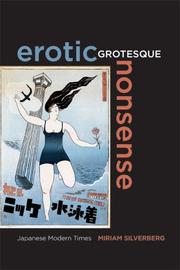| Listing 1 - 8 of 8 |
Sort by
|
Book
Year: 1994 Publisher: Turnhout Turnhout Wereldcentrum van de Speelkaart vzw en het Nationaal Museum van de Speelkaart
Abstract | Keywords | Export | Availability | Bookmark
 Loading...
Loading...Choose an application
- Reference Manager
- EndNote
- RefWorks (Direct export to RefWorks)
Drawing --- Recreation. Games. Sports. Corp. expression --- beeldverhalen
Book
Year: 1993 Publisher: Turnhout Nationaal Museum van de Speelkaart
Abstract | Keywords | Export | Availability | Bookmark
 Loading...
Loading...Choose an application
- Reference Manager
- EndNote
- RefWorks (Direct export to RefWorks)
Drawing --- Recreation. Games. Sports. Corp. expression --- tentoonstellingen --- beeldverhalen --- Turnhout
Book
Year: 1990 Publisher: Hasselt Stripspeciaalzaak Wonderland
Abstract | Keywords | Export | Availability | Bookmark
 Loading...
Loading...Choose an application
- Reference Manager
- EndNote
- RefWorks (Direct export to RefWorks)
Drawing --- Recreation. Games. Sports. Corp. expression --- verzamelen --- beeldverhalen --- Belgium
Book
ISBN: 9781605490151 Year: 2009 Publisher: Raleigh TwoMorrows
Abstract | Keywords | Export | Availability | Bookmark
 Loading...
Loading...Choose an application
- Reference Manager
- EndNote
- RefWorks (Direct export to RefWorks)
Zonder onderwerpscode: algemeen --- Drawing --- Recreation. Games. Sports. Corp. expression --- verzamelen --- beeldverhalen --- United States of America

ISBN: 1888472685 Year: 2006 Publisher: Timonium Gemstone
Abstract | Keywords | Export | Availability | Bookmark
 Loading...
Loading...Choose an application
- Reference Manager
- EndNote
- RefWorks (Direct export to RefWorks)
Drawing --- Recreation. Games. Sports. Corp. expression --- verzamelen --- beeldverhalen --- Geppi's Entertainment Museum (GEM) --- United States of America

ISBN: 1282355961 9786612355967 0520924622 9780520924628 9781282355965 0520222733 9780520222731 9780520260085 0520260082 6612355964 Year: 2006 Volume: 1 Publisher: Los Angeles University of California Press
Abstract | Keywords | Export | Availability | Bookmark
 Loading...
Loading...Choose an application
- Reference Manager
- EndNote
- RefWorks (Direct export to RefWorks)
This history of Japanese mass culture during the decades preceding Pearl Harbor argues that the new gestures, relationship, and humor of ero-guro-nansensu (erotic grotesque nonsense) expressed a self-consciously modern ethos that challenged state ideology and expansionism. Miriam Silverberg uses sources such as movie magazines, ethnographies of the homeless, and the most famous photographs from this era to capture the spirit, textures, and language of a time when the media reached all classes, connecting the rural social order to urban mores. Employing the concept of montage as a metaphor that informed the organization of Japanese mass culture during the 1920's and 1930's, Silverberg challenges the erasure of Japanese colonialism and its legacies. She evokes vivid images from daily life during the 1920's and 1930's, including details about food, housing, fashion, modes of popular entertainment, and attitudes toward sexuality. Her innovative study demonstrates how new public spaces, new relationships within the family, and an ironic sensibility expressed the attitude of Japanese consumers who identified with the modern as providing a cosmopolitan break from tradition at the same time that they mobilized for war.
Popular culture --- Culture, Popular --- Mass culture --- Pop culture --- Popular arts --- Communication --- Intellectual life --- Mass society --- Recreation --- Culture --- History --- Japan --- Civilization --- J4143 --- J4172 --- Japan: Sociology and anthropology -- cultural trends and movements -- popular culture --- Japan: Sociology and anthropology -- family and interpersonal relations -- sex relations (identity, preference, community, customs and culture) --- Popular culture - Japan - History - 20th century --- Japan - Civilization - 1912-1926 --- Japan - Civilization - 1926-1945 --- Philosophy and psychology of culture --- Sociology of cultural policy --- cultuurbeleid --- 1920s. --- 1930s. --- academic. --- colonialism. --- consumerism. --- cultural studies. --- culture. --- daily life. --- erotic. --- ethnography. --- fashion. --- food. --- government. --- grotesque. --- homeless. --- housing. --- ideology. --- japan. --- japanese history. --- japanese. --- mass culture. --- modern world. --- movies. --- pearl harbor. --- photography. --- political. --- politics. --- pop culture. --- popular entertainment. --- postwar. --- rural. --- scholarly. --- social studies. --- television. --- urban. --- wartime. --- world war 2. --- wwii.
Multi
ISSN: 21526648 19342489 ISBN: 9780816654826 0816654824 0816669686 Year: 2006 Volume: 3 Publisher: Minneapolis, MN : University of Minnesota Press,
Abstract | Keywords | Export | Availability | Bookmark
 Loading...
Loading...Choose an application
- Reference Manager
- EndNote
- RefWorks (Direct export to RefWorks)
The Mechademia series was born at Schoolgirls and Mobile Suits, the previous iteration of the Mechademia conferences. Like SGMS, the Mechademia series became an international center for discussion of the cultural study, creation, theories, aesthetics, semiotics, and history, as well as the fascination and wonder of the remarkably broad range of objects and practices that have developed around the global proliferation of Japanese anime, manga, and gaming.
Animated films --- Animated television programs --- Video games --- Comic books, strips, etc --- Popular culture --- Animated films. --- Animated television programs. --- Comic books, strips, etc. --- Video games. --- Television games --- Videogames --- Electronic games --- Civilization --- Comic strips --- Comics --- Funnies --- Manga (Comic books, strips, etc.) --- Manhua (Comic books, strips, etc.) --- Manhwa (Comic books, strips, etc.) --- Serial picture books --- Caricatures and cartoons --- Wit and humor, Pictorial --- Cartoons (Television programs) --- Television cartoon shows --- Television programs --- Animation (Cinematography) --- Animated cartoons (Motion pictures) --- Animated videos --- Cartoons, Animated (Motion pictures) --- Motion picture cartoons --- Moving-picture cartoons --- Motion pictures --- Abstract films --- Animation cels --- Culture, Popular --- Mass culture --- Pop culture --- Popular arts --- Communication --- Intellectual life --- Mass society --- Recreation --- Culture --- History and criticism --- Japanese influences --- Japanese influences. --- Japan. --- al-Yābān --- Giappone --- Government of Japan --- Iapōnia --- I͡Aponii͡ --- Japam --- Japani --- Japão --- Japon --- Japonia --- Japonsko --- Japonya --- Jih-pen --- Mư̄ang Yīpun --- Nihon --- Nihonkoku --- Nippon --- Nippon-koku --- Nipponkoku --- Prathēt Yīpun --- Riben --- State of Japan --- Yābān --- Yapan --- Yīpun --- Zhāpān --- Film --- Japan --- Manhua (Comic books) --- Manhwa (Comic books) --- Popular culture - Japan --- Graphic arts - Japan --- Popular culture - Japanese influences --- Animated films - Japan - History and criticism --- Human beings - Variation --- Computer games --- Internet games --- Games --- futurologie --- beeldverhalen --- Graphic arts --- Human beings --- Anime --- Manga

ISBN: 9781403974754 1403974756 9781403984760 140398476X Year: 2007 Publisher: New York, N.Y. Palgrave Macmillan
Abstract | Keywords | Export | Availability | Bookmark
 Loading...
Loading...Choose an application
- Reference Manager
- EndNote
- RefWorks (Direct export to RefWorks)
Contemporary Japanese pop culture such as anime and manga (Japanese animation and comic books) is Asia's equivalent of the Harry Potter phenomenon--an overseas export that has taken America by storm. While Hollywood struggles to fill seats, Japanese anime releases are increasingly outpacing American movies in number and, more importantly, in the devotion they inspire in their fans. But just as Harry Potter is both "universal" and very English, anime is also deeply Japanese, making its popularity in the United States totally unexpected. Japanamerica is the first book that directly addresses the American experience with the Japanese pop phenomenon, covering everything from Hayao Miyazaki's epics, the burgeoning world of hentai, or violent pornographic anime, and Puffy Amiyumi, whose exploits are broadcast daily on the Cartoon Network, to literary novelist Haruki Murakami, and more. With insights from the artists, critics, readers and fans from both nations, this book is as literate as it is hip, highlighting the shared conflicts as American and Japanese pop cultures dramatically collide in the here and now.
Popular culture --- Japanese influences --- United States --- Japan --- Civilization --- J4143 --- J4129 --- J6848 --- J6794.11 --- Culture, Popular --- Mass culture --- Pop culture --- Popular arts --- Communication --- Intellectual life --- Mass society --- Recreation --- Japan: Sociology and anthropology -- cultural trends and movements -- popular culture --- Japan: Sociology and anthropology -- cross-cultural contacts, contrasts and globalization --- Japan: Media arts and entertainment -- anime --- North America: Performing arts and entertainment in the United States --- Japanese influences. --- -Civilization --- -J4143 --- -Popular culture --- Nihon --- Nippon --- Iapōnia --- Zhāpān --- I︠A︡ponii︠a︡ --- Yapan --- Japon --- Japão --- Japam --- Mư̄ang Yīpun --- Prathēt Yīpun --- Yīpun --- Jih-pen --- Riben --- Government of Japan --- U.S.A. --- Jungtinės Amerikos valstybės --- Soedinennye Shtaty Si︠e︡vernoĭ Ameriki --- Soedinennye Shtaty Severnoĭ Ameriki --- Si︠e︡vero-Amerikanskīe Soedinennye Shtaty --- Severo-Amerikanskie Soedinennye Shtaty --- Zlucheni Derz︠h︡avy --- USA --- US --- Arhab --- Ar. ha-B. --- Artsot ha-Berit --- ولايات المتحدة الامريكية --- Wilāyāt al-Muttaḥidah al-Amirīkīyah --- ABSh --- Amerika Birlăshmish Shtatlary --- ABŞ --- Amerika Birlăşmi Ştatları --- Forente stater --- Spojené staty americké --- Severo-Amerikanskie Shtaty --- Sjedinjene Američke Države --- Zʹi︠e︡dnani Derz︠h︡avy Ameryky --- Amerikai Egyesült Államok --- Yhdysvallat --- Verenigde Staten --- Egyesült Államok --- Hiwsisayin Amerikayi Miatsʻeal Tērutʻiwnkʻ --- Estados Unidos de América --- United States of America --- Fareyniḳṭe Shṭaṭn --- Artzois Ha'bris --- Estados Unidos da América do Norte --- SShA --- Soedinennye Shtaty Ameriki --- VSA --- États-Unis d'Amérique --- Vereinigte Staaten von Amerika --- Stati Uniti d'America --- Estados Unidos --- EE.UU. --- Stany Zjednoczone --- ĒPA --- Amerika Qūrama Shtattary --- Amerika Qŭshma Shtatlari --- SAD --- Saharat ʻAmērikā --- Hēnomenai Politeiai Amerikēs --- ZSA --- Mei-kuo --- Meiguo --- Mei guo --- ZDA --- Združene države Amerike --- U.S. --- America (Republic) --- Amirika Carékat --- Verenigde State van Amerika --- VS --- ولايات المتحدة --- Wilāyāt al-Muttaḥidah --- ولايات المتّحدة الأمريكيّة --- Wilāyāt al-Muttaḥidah al-Amrīkīyah --- Estatos Unitos --- Estatos Unitos d'America --- Ètats-Unis d'Amèrica --- Estaos Xuníos d'América --- Estaos Xuníos --- Tetã peteĩ reko Amérikagua --- Istadus Unidus --- Amerika Birlăşmiş Ştatları --- Amerika ka Kelenyalen Jamanaw --- Bí-kok --- Amerika Qushma Shtattary --- AQSh --- Злучаныя Штаты Амерыкі --- Zluchanyi︠a︡ Shtaty Ameryki --- Yunaeted Stet blong Amerika --- Yunaeted Stet --- Vaeinigte Staatn --- Vaeinigte Staatn vo Amerika --- Stadoù-Unanet Amerika --- Sŭedineni amerikanski shtati --- САЩ --- SASht --- Съединените щати --- Sŭedinenite shtati --- Америка (Republic) --- Amerika (Republic) --- Estats Units d'Amèrica --- Америкӑри Пӗрлешӳллӗ Штатсем --- Amerikări Pĕrleshu̇llĕ Shtatsem --- Stati Uniti --- SUA (Stati Uniti d'America) --- Unol Daleithiau America --- Unol Daleithiau --- Amerikas Forenede Stater --- Vereinigte Staaten --- Wááshindoon Bikéyah Ałhidadiidzooígíí --- Zjadnośone staty Ameriki --- Ameerika Ühendriigid --- Ηνωμένες Πολιτείες της Αμερικής --- Hēnōmenes Politeies tēs Amerikēs --- Η.Π.Α. --- Ē.P.A. --- Usono --- Unuiĝintaj Ŝtatoj de Ameriko --- Американь Вейтьсэндявкс Штаттнэ --- Amerikanʹ Veĭtʹsėndi︠a︡vks Shtattnė --- Ameriketako Estatu Batuak --- Feriene Steaten --- Feriene Steaten fan Amearika --- FS --- Stâts Unîts di Americhe --- Stâts Unîts --- Stáit Aontaithe Mheiriceá --- Steatyn Unnaneysit America --- Steatyn Unnaneysit --- S.U.A. --- Na Stàitean Aonaichte --- NSA --- Mî-koet --- 미국 --- Miguk --- Amerikayi Miatsʻyal Nahangner --- Miatsʻyal Nahangner --- Culture --- #SBIB:309H040 --- #SBIB:316.7C140 --- Populaire cultuur algemeen --- Cultuursociologie: cultuur en globale samenlevingen --- Sociology of culture --- Popular culture - United States - Japanese influences --- Popular culture - Japan --- United States - Civilization - 1970 --- -Japan - Civilization - 1945 --- Amerikaanse cultuur --- beeldverhalen --- Culture populaire --- États-Unis --- Influence japonaise --- Civilisation --- 1945-.... --- 1970-2000
| Listing 1 - 8 of 8 |
Sort by
|

 Search
Search Feedback
Feedback About UniCat
About UniCat  Help
Help News
News